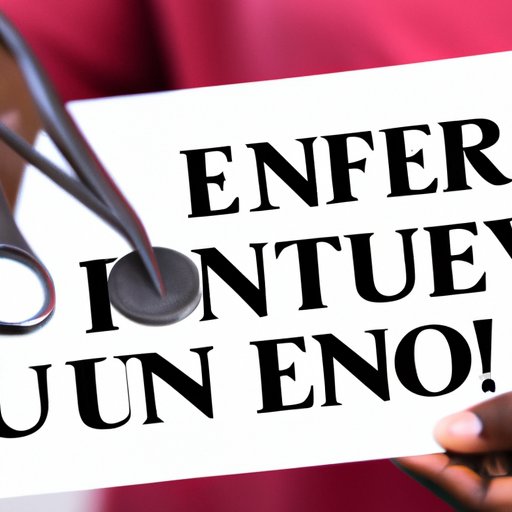
I. Introduction
If you’re a woman experiencing painful menstrual cycles or other reproductive issues, you may be wondering if getting a hysterectomy is right for you. Hysterectomy is the surgical removal of the uterus and it is a common procedure for treating a variety of health issues. In this article, we’ll explore the basics of hysterectomy procedures, the pros and cons of the procedure, considerations you should take before making a decision, and how to cope with the emotional and physical changes that come with living without a uterus.
II. Uterine Removal: Who Qualifies and What You Need to Know
There are several reasons why you may need a hysterectomy, including uterine fibroids, endometriosis, uterine prolapse, abnormal vaginal bleeding, and gynecologic cancer. Before deciding to have a hysterectomy, your doctor will likely perform a pelvic exam, pap smear, blood tests, and diagnostic imaging tests such as ultrasounds or MRIs to determine the best course of treatment for your specific health issue.
Once it’s been determined that a hysterectomy is the best option, you and your doctor will discuss the types of hysterectomy available, including:
- Partial or supracervical hysterectomy: Removal of the upper part of the uterus, leaving the cervix intact.
- Total hysterectomy: Removal of the entire uterus and cervix.
- Radical hysterectomy: Removal of the uterus, cervix, ovaries, fallopian tubes, and sometimes parts of the vagina and lymph nodes.
Your doctor will work with you to determine which type of hysterectomy is best for your specific health needs. It’s important to note that a hysterectomy is a permanent procedure that will stop menstruation and eliminate the possibility of pregnancy.
III. Surgery for Painful Periods: Understanding Uterine Removal Procedures
There are several surgical procedures for uterine removal, including laparoscopic and robotic procedures. Laparoscopic surgery involves making several small incisions in the abdomen and using a camera and special surgical tools to remove the uterus. Robotic surgery is similar, but the surgeon controls the robotic instruments from a console.
Before the procedure, you’ll likely be asked to stop eating or drinking for a specific period of time. Your physician may also provide specific instructions regarding current medication. During the procedure, anesthesia will be used to help prevent pain.
IV. The Pros and Cons of Uterine Removal: Is it Right for You?
There can be significant benefits to having a hysterectomy, including relief from chronic pain, menstrual issues, and lower risk of gynecologic cancers. However, there are also several potential disadvantages to consider, including hormonal changes, emotional impact, long-term health risks, and the inability to become pregnant.
It’s important to discuss all potential outcomes with your physician and take your individual circumstances into account when deciding whether to have a hysterectomy.
V. Making the Decision to have a Hysterectomy: Factors to Consider
Before deciding to have a hysterectomy, there are several factors to consider. It’s important to weigh the potential benefits and disadvantages against your specific health needs. Additionally, you should consider your overall mental and physical health as well as your family planning and fertility options.
It’s also important to discuss the procedure with your family and support system, as well as exploring resources for emotional support during and after the procedure.
VI. Uterine Removal: Before, During, and After Surgery
Before your surgery, your physician will provide instructions for preparing for the procedure, including any dietary and medication restrictions and instructions for post-surgical recovery. During the procedure, anesthesia will be used to prevent pain and you’ll be monitored for any potential complications.
After the surgery, you’ll likely need to take time off work and other activities to allow your body to properly heal. You may experience pain and discomfort in the days and weeks following the surgery, but your physician will provide specific instructions for post-surgical care and follow-up appointments.
VII. Living without a Uterus: Coping with the Emotional and Physical Changes
Living without a uterus can cause significant emotional and physical changes. It’s important to take time to properly adjust to your new normal and explore resources for emotional support and physical care. This may include working with your physician to explore hormone replacement therapy, exploring pelvic floor exercises, or seeking support groups for women who have had hysterectomies.
VIII. A Woman’s Guide to Hysterectomy: Answers to Common Questions and Concerns
If you’re considering a hysterectomy, you likely have several questions and concerns. Common questions include the cost of the procedure, potential complications, and information about recovery. It’s important to discuss these concerns with your physician and seek out reputable resources for information and support.
IX. Conclusion
Deciding whether to have a hysterectomy is a significant decision that should be discussed with your physician and support system. While there can be significant health benefits to uterine removal, there are also potential disadvantages and emotional and physical changes to consider. By exploring your options and seeking out support and information, you can make an informed decision about your health.
Remember, it’s important to listen to your body and prioritize your health and wellbeing.




